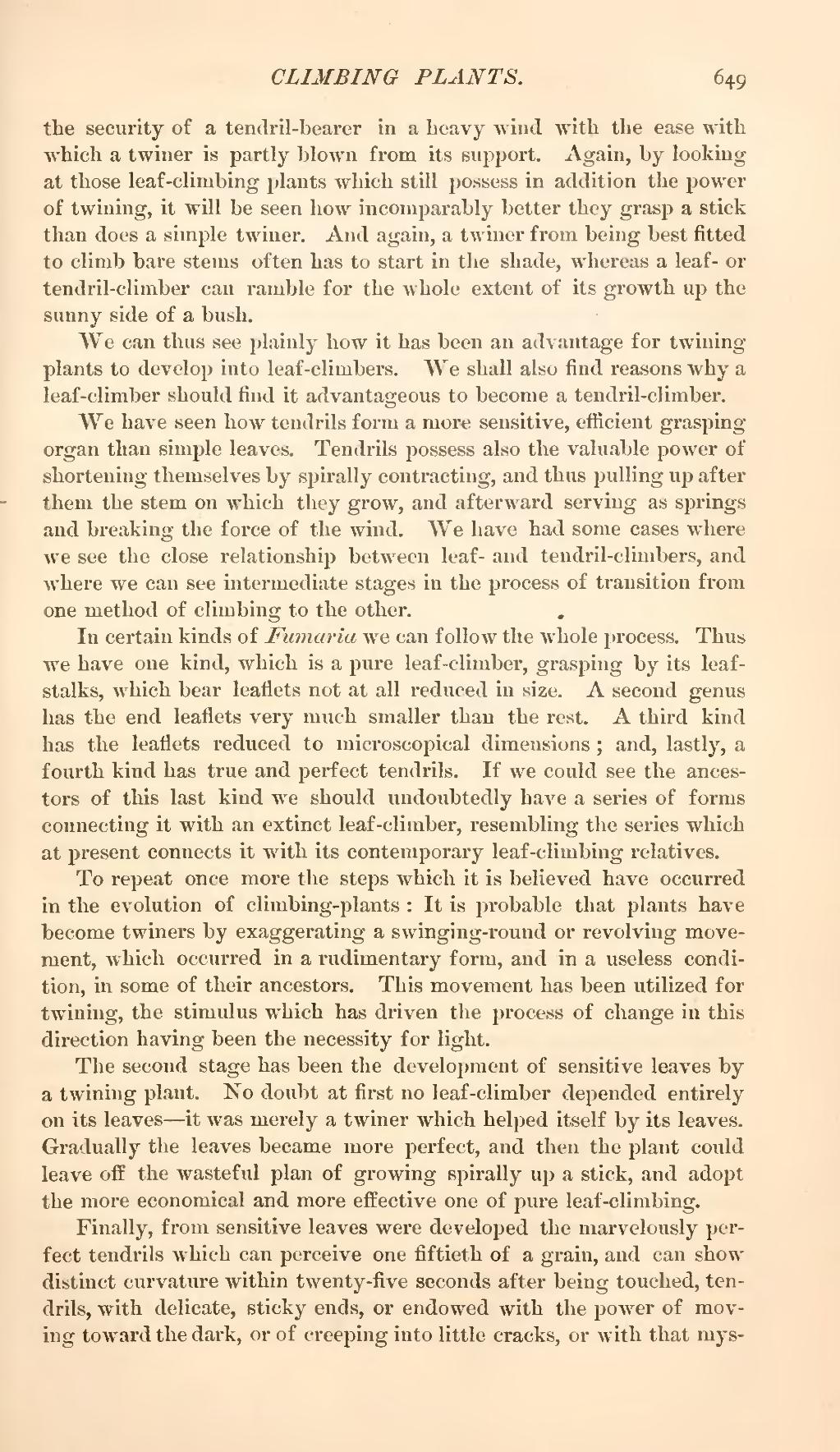the security of a tendril-bearer in a heavy wind with the ease with which a twiner is partly blown from its support. Again, by looking at those leaf-climbing plants which still possess in addition the power of twining, it will be seen how incomparably better they grasp a stick than does a simple twiner. And again, a twiner from being best fitted to climb bare stems often has to start in the shade, whereas a leaf-or tendril-climber can ramble for the whole extent of its growth up the sunny side of a bush.
We can thus see plainly how it has been an advantage for twining plants to develop into leaf-climbers. We shall also find reasons why a leaf-climber should find it advantageous to become a tendril-climber.
We have seen how tendrils form a more sensitive, efficient grasping organ than simple leaves. Tendrils possess also the valuable power of shortening themselves by spirally contracting, and thus pulling up after them the stem on which they grow, and afterward serving as springs and breaking the force of the wind. We have had some cases where we see the close relationship between leaf-and tendril-climbers, and where we can see intermediate stages in the process of transition from one method of climbing to the other.
In certain kinds of Fumaria we can follow the whole process. Thus we have one kind, which is a pure leaf-climber, grasping by its leafstalks, which bear leaflets not at all reduced in size. A second genus has the end leaflets very much smaller than the rest. A third kind has the leaflets reduced to microscopical dimensions; and, lastly, a fourth kind has true and perfect tendrils. If we could see the ancestors of this last kind we should undoubtedly have a series of forms connecting it with an extinct leaf-climber, resembling the series which at present connects it with its contemporary leaf-climbing relatives.
To repeat once more the steps which it is believed have occurred in the evolution of climbing-plants: It is probable that plants have become twiners by exaggerating a swinging-round or revolving movement, which occurred in a rudimentary form, and in a useless condition, in some of their ancestors. This movement has been utilized for twining, the stimulus which has driven the process of change in this direction having been the necessity for light.
The second stage has been the development of sensitive leaves by a twining plant. No doubt at first no leaf-climber depended entirely on its leaves—it was merely a twiner which helped itself by its leaves. Gradually the leaves became more perfect, and then the plant could leave off the wasteful plan of growing spirally up a stick, and adopt the more economical and more effective one of pure leaf-climbing.
Finally, from sensitive leaves were developed the marvelously perfect tendrils which can perceive one fiftieth of a grain, and can show distinct curvature within twenty-five seconds after being touched, tendrils, with delicate, sticky ends, or endowed with the power of moving toward the dark, or of creeping into little cracks, or with that mys-
